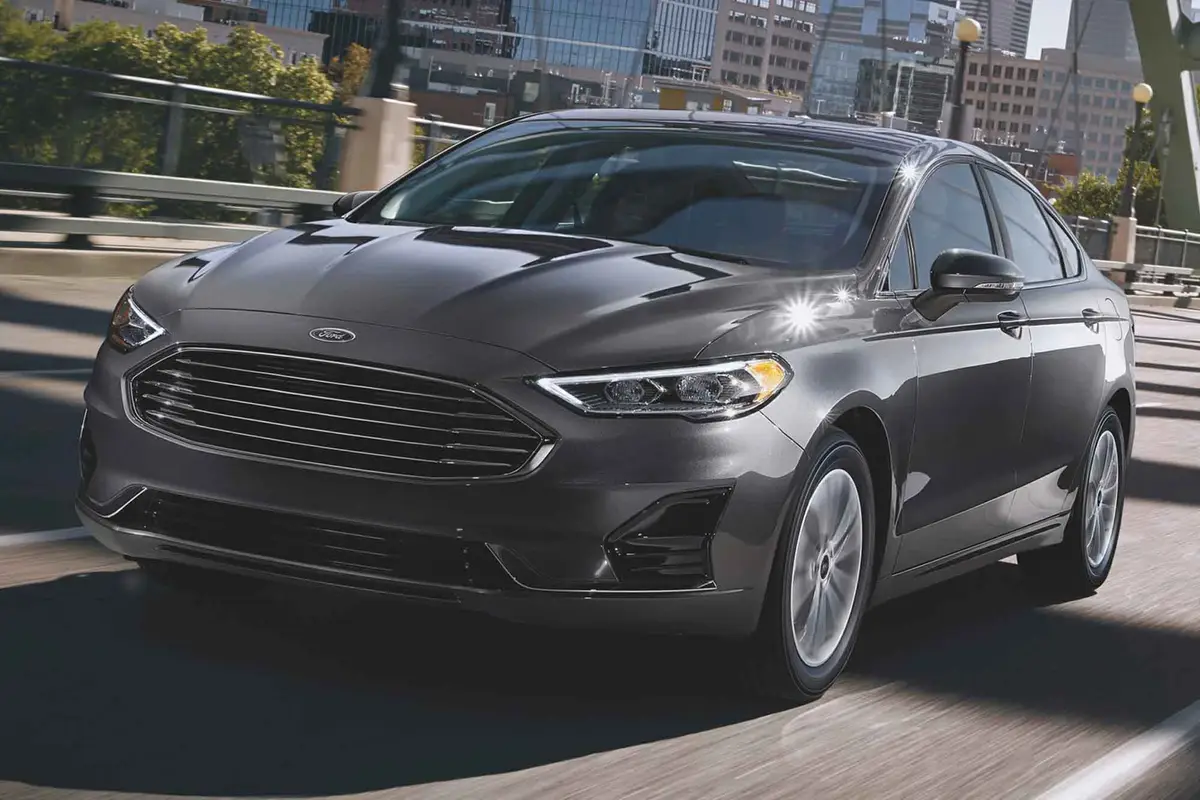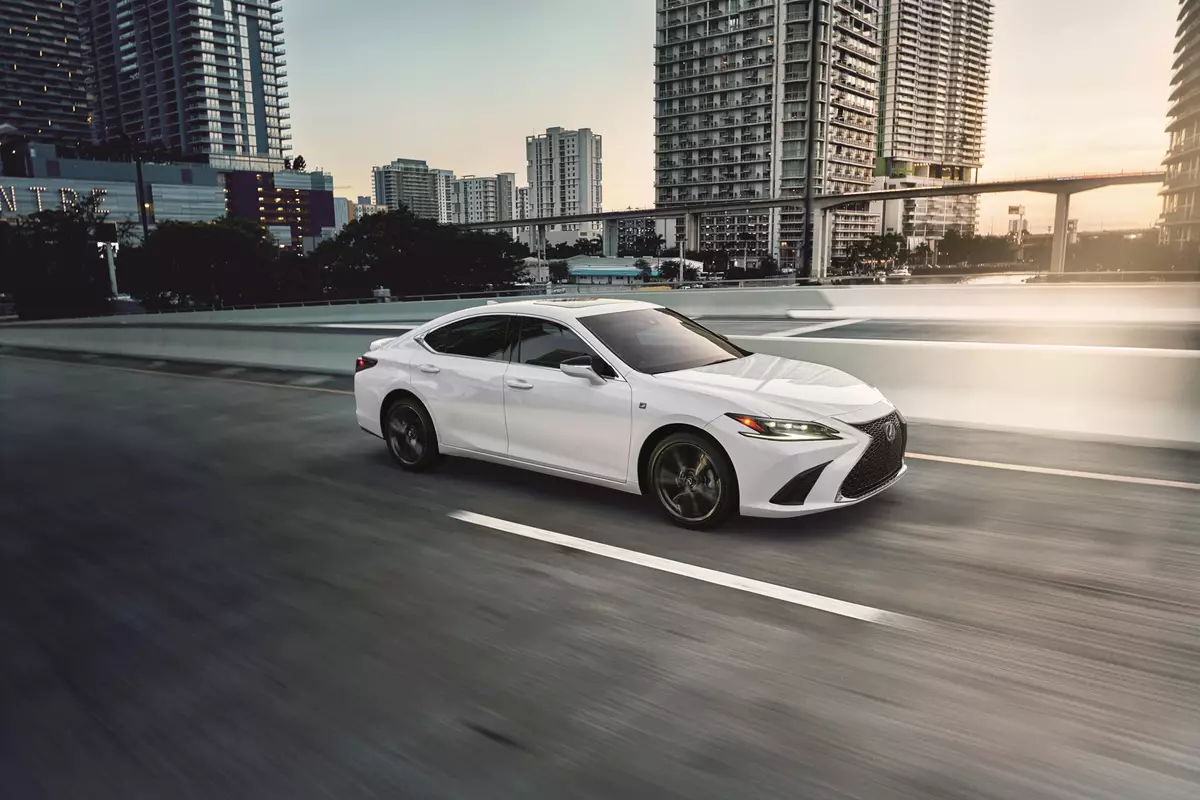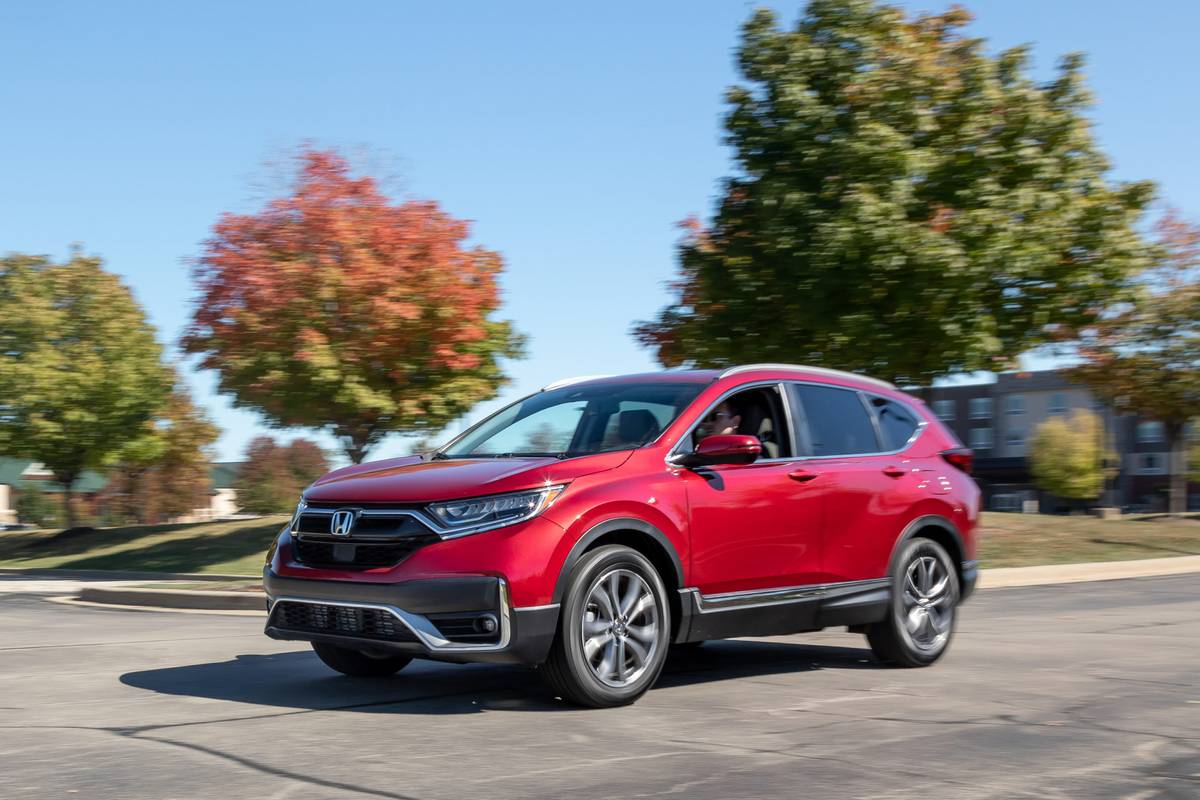Video: F-150 Lightning Versus F-150 Hybrid: How They Tow, Haul, Accelerate
By Cars.com Editors
September 6, 2022
Share
About the video
What better benchmark to test the all-electric Ford F-150 Lightning’s capabilities than the Ford F-150 hybrid? Watch our video to answer which $80,000 electrifed F-150 is best for you.
Transcript
(upbeat music) <v Mike>Until recently, if you wanted an all-electric pickup truck, you didn't really have any choices. But now there are models like the Rivian R1T, the GMC Hummer EV and what we have here, the 2022 Ford F-150 Lightning.
<v Aaron>They've made the bestselling full-size pickup truck for nearly 50 years now. So if anybody knows their customers, and they know what a truck needs to do, it's Ford. And so we've got one here, but we have some questions. So when we look at electric vehicles in other types of vehicle classes, we look at things like range, we look at things like efficiency, charging speed, and we know that's important to truck shoppers, but there are also other considerations, too, we had to take into account. Yeah, we have to understand exactly how well does an F-150 Lightning truck. How well can it do truck things? How well does it tow? How far can it tow? Given that it's an electric vehicle, the towing range is gonna be, probably, a lot less. How well does it handle with a payload? That's just generally what we test in any kind of truck, but how all of these things mix together when you've got an electric powertrain is something we're just not familiar with and something that we really decided we needed to test. And so to do that, we took this truck to the drag strip to do some acceleration testing with and without payload. And we also took it towing with this camper because we wanted to see what kind of range we would get, how efficient it would be and also how long it would take to recharge when you're on the road. All very important questions. And really, it helps us answer the question, how well does the F-150 Lightning act when you need it to be a pickup truck? So we tested a Lariat version of the Lightning. It has a dual-motor drivetrain that gives it four-wheel drive, and it's rated at 580 horsepower and 775 pounds-feet of torque. It also has an extended-range battery for an EPA-estimated 320 miles of range. And the price as tested is around $80,000. And, you know, that's cool and all, Mike, but remember this thing? This is the 2021 Ford F-150 PowerBoost hybrid. It was our previous favorite electrified Ford F-150. It won our Best of 2021 award. And we still have it in our long-term fleet. So we figured, why not bring it along with the F-150 Lightning to the track and doing the towing tests to see what a baseline gasoline version does against Ford's new electrified pickup? We started our testing at the drag strip and it showed just how quick the F-150 Lightning is despite a hefty curb weight approaching 6,800 pounds. We found that whether you have any payload in its cargo bed or not, the dual-motor four-wheel-drive truck launches with a vengeance with just a bit of wheel slip as its four tires dig for traction. 60 mph arrives in just 4.19 seconds when the bed is empty, and with 1,200 pounds of sandbag secured in the back, the 0-60 mph time increases just 0.6 seconds to 4.79. The F-150 hybrid, by comparison, is more than a second-and-a-half behind the Lightning in both tests. The Lightning's immediate power delivery was also apparent in our 50-70 mph acceleration test, which can be useful for gauging its higher-speed passing performance. Unloaded, it bested the F-150 hybrid by nearly a second: 1.99 seconds versus 2.96. The F-150 hybrid takes a moment to respond with a transmission kickdown before accelerating, but when you're in the F-150 Lightning, it just shoots forward instantly, no waiting required. With our sandbag payload in the bed of each truck, the gap grew to 1.07 seconds, with the F-150 Lightning going from 50 to 70 in 2.26 versus 3.33 for the F-150 hybrid. After the track testing, it was time to take the truck on our towing route, an approximately 140-mile loop that passed through the south suburbs of Chicago and the farming communities beyond. So this is my first time towing with the all-electric F-150 Lightning, and I have to say it's actually something of a surreal experience. I'm pretty familiar with towing with Fords. I just recently towed an Airstream very similar to this one with the latest Ford Expedition, and while the interior looks very similar to that truck, the experience of towing the thing differs considerably. First of all, it is silent. There's no noise. You don't hear anything. There's no powertrain roar. It's just smooth and quiet. You hear a lot of the things like the trailer creaking every now and then, but you also don't hear a lot of wind noise. You don't hear a lot of tire noise. Ford has done an extraordinary job in isolating the cabin now that it doesn't have the engine noise to hide behind anymore. One thing that is not quite so calming is you're always keeping your eye on that range. And when you hook up a trailer to it it's gonna take a little while, a couple of miles at least, anywhere, like, it took this one about 7 to 10 miles before it changes the range prediction from what it thinks you should be getting based on the inputs that you've made for storing your trailer in the actual towing data system to what it actually feels the trailer is doing and how you are driving. And case in point, it dropped my predicted range from 152 miles to 138 miles (snaps) just like that. It just suddenly decided based on the conditions on what you're doing and the terrain and how the energy usage has been going, you're not gonna get quite that mileage that we originally told you you were going to. Which, you know, fine. Great. I'd rather they told me that so that I'm not expecting to go 152 miles and come dead at 140. So, right now it says 136 miles of range, but it's holding pretty steady there. So I think that now that it's had a chance to learn the trailer, to learn the driving style, to learn the terrain that we're driving on, hopefully that has improved its accuracy just a little bit. So I'm now in the Lightning. We've switched drivers at the midpoint, approximately, in our route. And so far we've driven about 85 miles. We have about 55 miles to go before we reach the end of it. And our current projected range in the F-150 Lightning is 71 miles. So, looks like we'll be all right, but this part of our route is all interstate. So, higher speeds. And the first part, we were on a mix of two-lane country roads, some suburban roads, so the higher speeds here will be interesting to see how that affects our projected range. (upbeat music) So we just got a warning that our driving range is low. We've reached 50 miles of range remaining in the Lightning and we've traveled 106 miles. We've been going around 55 to 60 mph on the interstate, not too fast, but for the last 10 miles or so, I've been watching the predicted range with a distance travel and it's been pretty consistent. So it seems like that 50-mile figure is something we can rely on for the last part of our drive as we try and get back. We have around 33 miles left to go before we get back to our starting point. So we made it back. We traveled 136 miles total and the truck is saying we have 27 miles of range left. When we first started, we had a 97% battery charge. It was showing 317 miles of range. That got revised down to 158 with our trailer added. And then it dropped again as the truck kind of was able to get a sense of how the trailer was affecting performance. So once we were at that amount of range, it seemed pretty consistent through the rest of our trip to the point where we're at now. The F-150 Lightning's average efficiency was 1.3 miles per kilowatt-hour at the end of our towing drive, or around half the 2.5 miles per kilowatt-hour we observed when we drove the truck on the same route the following day without a trailer. Not surprisingly, the F-150 hybrid also saw its average efficiency cut in approximately half when towing, from a trip computer average of 26.6 mpg when driven without a trailer to 12.6 mpg when towing the 5,900-pound Airstream. Even though the trucks saw similar efficiency losses, the F-150 hybrid and its 30-gallon fuel tank give it a theoretical driving range when towing that's more than double the F-150 Lightning's. The F-150 hybrid's refueling time can also be measured in minutes, which is a lot less, as we learned, than the time it takes to fast-charge an F-150 Lightning. So we're now at an Electrify America fast-charging station. We're going to connect the F-150 Lightning and see how long it takes to recharge the battery. Before we could even begin our fast-charging tests, we had to unhitch the Airstream from the truck. Unlike most gas stations, where you can pull through with a trailer to refuel, most public charging stations we've encountered aren't designed that way. Instead, they're often located on the outskirts of a shopping center with the charger at the curb in front of a regular parking spot. If we had left the Airstream hitched while charging, it would've blocked a traffic lane in the parking lot and we didn't wanna be those people. It only took around five minutes to unhitch the trailer, but it added another step in the process. At the start of our charging test, the F-150 Lightning's battery was at 17% and the truck was showing a predicted range of 26 miles; 45 minutes later, the battery had reached an 80% state of charge with the charger's screen showing 84.5 kilowatt-hours of energy added. Charging speeds were fairly consistent over the 45-minute session, ranging from around 100 to 125 kilowatts. However, the truck's predicted range at 80% was only 127 miles, a reflection of the truck's recent towing work. That didn't seem like a lot of range to us, so even though fast-charging speeds tend to drop when charging above 80%, we kept going in order to maximize our range, as an owner on a towing trip might. As expected, our charging speed dipped as we passed an 80% state of charge. It took one hour and 25 minutes to go from 80% to 100%, and this added just 36 miles of predicted range, for a total predicted range of 163 miles. Over the entire charging session, the F-150 Lightning added 115.4 kWh of energy at a cost of $49.45. So we've tested the F-150 Lightning now. We've driven it at the drag strip. We've towed a camper with it. We've recharged with it. We've had a decent amount of experience in the thing now. What do you think of it? I think the truck definitely has its strengths, but there are also some shortcomings that a potential buyer needs to know about. The thing is incredibly quick at the drag strip for how big and heavy it is. It tows really nice. We saw that when we were towing this camper with it. Just really smooth, quiet. But we also saw those downsides. It tows really well. It just doesn't tow really far. We also towed through Illinois, where it's largely flat, it's still relatively slow, under 65 mph, and there isn't a whole lot of hills. If you're gonna be towing somewhere like Colorado or California, you're gonna see less range. But I really think, I kind of drew home the fact that it's a good towing truck but for very specific towing applications. Yeah, it's not gonna be that kind of cross-country travel truck just because of that range, but also how long it took to get back to 100% when we were fast-charging it. The full charging time from 20% to 100% was 2 hours and 10 minutes. And if you're on the road, that's gonna really add to your trip. But if you're saying just towing your boat to the lake 40 minutes away, or if you're towing, like, a trailer full of landscaping equipment around town for your business, then it actually does make sense. It really does work because you're going back to a specific known charging spot every day, and that really will help aid you in your operation of the vehicle. Oh yeah. So I think we were certainly impressed with the new F-150 Lightning and you definitely can use it as you would normally use a pickup truck, but there's a caveat there: You might not necessarily be able to use it in every way that you used a gas-powered pickup truck in the past. But if you'd like to know more about the new 2022 Ford F-150 Lightning, you can look everything up on Cars.com.
Featured stories

By Drew Koenig
July 2, 2025

By Jared Gall
June 27, 2025

By Jared Gall
June 25, 2025
